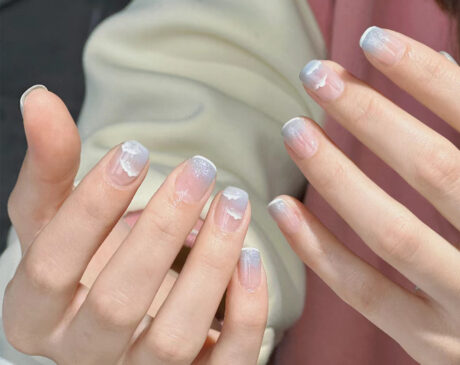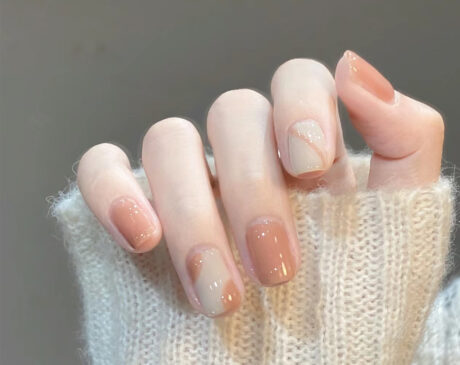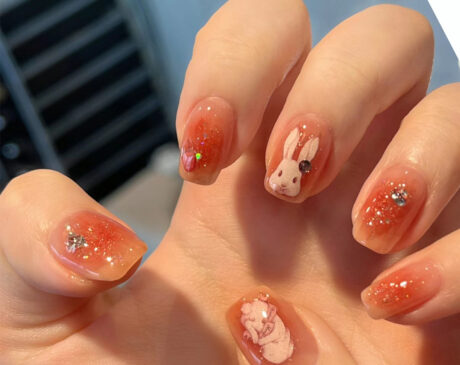Does Ice Water Really Dry Nail Polish?
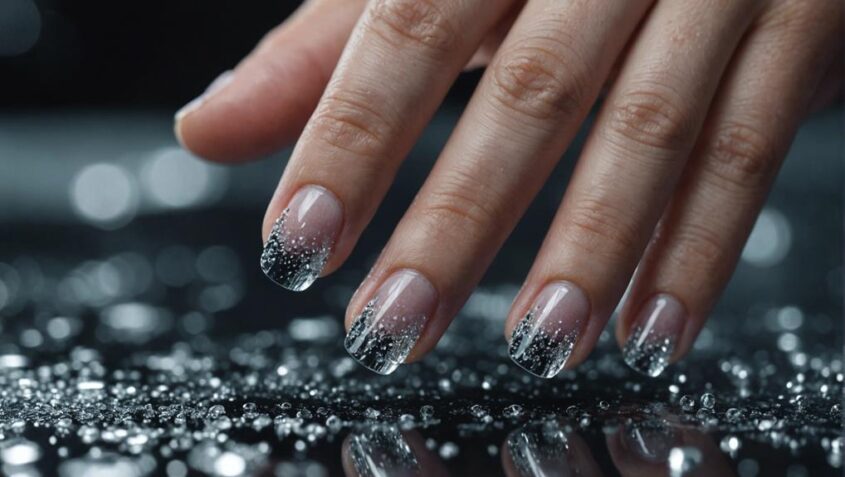
Ice water can speed up the drying process of nail polish by interacting with the polymers in the formula. This quick-drying effect is due to the cold temperature of the water affecting the polish's molecular structure. It can lead to smoother polish application, enhance glossiness, and create a professional look. While ice water offers time-saving benefits, it's essential to be mindful of potential risks like nail brittleness. Considering other drying techniques and nail health concerns is crucial for maintaining nail integrity and well-being. Try the ice water method for quick results, and explore further techniques for optimal nail care.
Key Takeaways
- Ice water can expedite nail polish drying through cold temperature-induced thermal shock.
- Cold crystallization in polymers from ice water alters properties, affecting drying time.
- Ice water method smooths imperfections, seals color, and enhances gloss for a professional finish.
- Quick dip in ice water for 2-3 minutes accelerates drying, aiding in layer application.
- Consider risks like nail brittleness and dryness, and evaluate alternative drying techniques for nail health.
The Science of Nail Polish Drying
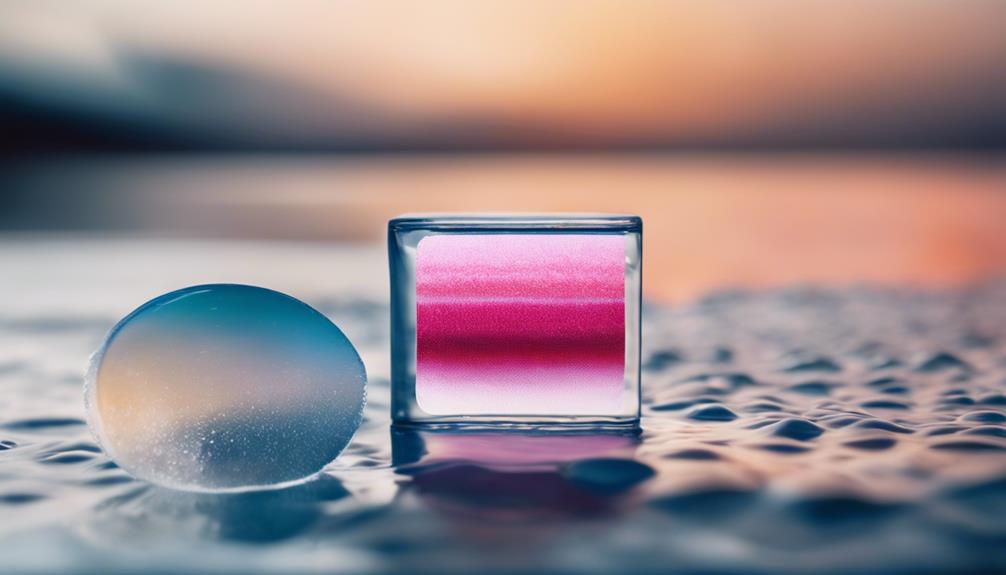
In the realm of beauty and cosmetics, understanding the intricate process of nail polish drying involves delving into the chemical composition and physical reactions that take place on the nail surface. Nail polish typically contains three main components: film formers, resins, and solvents. Film formers create the hard layer on the nail, while resins provide adhesion and durability. Solvents keep the polish in a liquid state until it is applied, evaporating once exposed to air to allow the film to form.
As the solvent evaporates, the film formers and resins come together to create a solid, glossy finish. This process is known as polymerization, where the molecules in the polish cross-link to form a continuous film. Factors such as temperature, humidity, and airflow can influence the speed at which this polymerization occurs, affecting the overall drying time of the nail polish.
How Ice Water Affects Polymers
When exposed to ice water, polymers undergo a change in their molecular structure that can impact their properties. Polymers are large molecules composed of repeating subunits, and their behavior can be altered by external factors such as temperature variations. Ice water, with its low temperature, can lead to a phenomenon known as cold crystallization in polymers. This process involves the rearrangement of polymer chains into a more ordered structure as a response to the cold stimulus. As a result, the mechanical properties of the polymer may change, affecting characteristics such as strength, flexibility, and durability. Understanding how ice water affects polymers is crucial for various industries that rely on polymer materials, from manufacturing to healthcare. Researchers continue to explore the intricacies of polymer behavior under different conditions, seeking to optimize material performance and develop innovative applications. By delving into the effects of ice water on polymers, scientists aim to unlock new possibilities for enhancing the properties and functionalities of these versatile materials.
Thermal Shock and Quick Drying
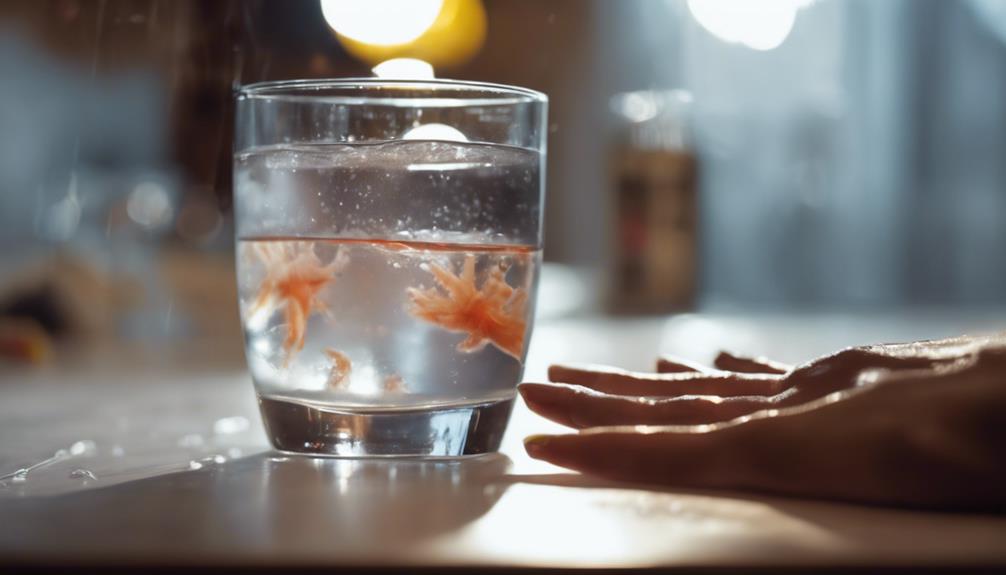
One possible consequence of exposing polymers to rapid temperature changes is the phenomenon of thermal shock, which can expedite the drying process of certain materials. Thermal shock occurs when a material undergoes sudden temperature variations, causing rapid expansion or contraction. In the context of nail polish, subjecting the wet polish to a quick temperature change, such as dipping in ice water, can induce thermal shock. This sudden change in temperature can help solidify the polish faster by accelerating the evaporation of solvents within the formula.
The principle behind thermal shock and quick drying lies in the manipulation of molecular movement. When exposed to a sudden cold temperature, the molecules in the nail polish slow down, reducing their mobility and aiding in the drying process. This innovative approach takes advantage of the properties of polymers to achieve a rapid drying effect, offering a potential solution for those seeking quick and efficient nail polish application.
Benefits of Ice Water Method
The ice water method offers several benefits when drying nail polish. It accelerates the drying process, allowing for a quicker application of multiple layers. Additionally, the cold temperature helps to smooth out imperfections in the polish and enhances the overall glossy finish of the nails.
Quickens Drying Time
Using the ice water method can significantly speed up the drying time of nail polish. By immersing freshly painted nails in ice water, the cold temperature helps solidify the polish layers more quickly than air drying alone. This innovative technique is popular among those seeking efficient ways to dry their nail polish faster. The rapid cooling effect from the ice water not only helps set the polish but also adds a glossy finish to the nails. This time-saving method is especially beneficial for individuals who are always on the go and need their nail polish to dry quickly without smudging or denting. Incorporating the ice water method into your nail routine can revolutionize the way you experience at-home manicures.
Smooths Out Imperfections
After quickening the drying time of nail polish, the ice water method further enhances the manicure process by smoothing out imperfections, ensuring a flawless finish. This innovative technique involves dipping freshly painted nails into ice water, causing the polish to harden rapidly while also helping to smooth any bumps or uneven areas. By submerging the nails in ice water, the polish sets more evenly, minimizing the appearance of imperfections such as streaks or bubbles. This method not only accelerates drying but also contributes to a more professional-looking manicure. Below is a table illustrating the benefits of the ice water method in smoothing out imperfections:
| Benefits of Ice Water Method for Smoothing Imperfections | ||
|---|---|---|
| Accelerates drying | Helps smooth bumps | Minimizes streaks |
| Hardens polish quickly | Evens out uneven areas | Reduces bubbles |
Enhances Glossy Finish
Enhancing the luster of nail polish, the ice water method provides a glossy finish that elevates the overall appearance of the manicure. This technique not only accelerates the drying process but also contributes to a stunning, high-shine result that lasts longer. Here are five ways the ice water method enhances the glossy finish of your nails:
- Seals in Color: Ice water helps seal the nail polish layers, intensifying the color and creating a vibrant look.
- Smooths Nail Surface: By rapidly cooling the polish, it helps smooth out any minor imperfections on the nail surface.
- Increases Shine: The cold temperature of the water enhances the natural shine of the nail polish.
- Creates a Professional Look: The glossy finish achieved through ice water mimics the results of a professional salon manicure.
- Improves Durability: The method helps the polish adhere better to the nail, increasing its longevity and reducing chipping.
Potential Risks to Consider
When considering the ice water method for drying nail polish, it is essential to be aware of potential risks to nail health. This method may lead to increased brittleness or dryness in nails over time. Additionally, it is crucial to evaluate the effectiveness of alternative drying techniques to minimize any negative impacts on nail health.
Nail Health Concerns
Proper nail health maintenance involves understanding and mitigating potential risks that could compromise the integrity of the nails. When it comes to nail health concerns, it's essential to consider the following:
- Nail infections: Fungal or bacterial infections can weaken the nails.
- Chemical exposure: Harsh chemicals in nail products can damage the nail bed.
- Nail trauma: Injuries or excessive pressure on the nails can lead to deformities.
- Nutritional deficiencies: Lack of essential nutrients can result in weak and brittle nails.
- Improper nail care: Incorrect trimming or filing techniques can cause nail damage.
Effectiveness of Alternatives
In evaluating the effectiveness of alternatives for nail health maintenance, it is crucial to consider potential risks that may impact the integrity and well-being of the nails. While innovative methods like using ice water to dry nail polish quickly are popular, they may pose risks such as causing the polish to chip or peel off prematurely. Exposing nails to extreme temperatures, such as sudden cold from ice water, could also lead to brittleness and weaken the nail structure over time. Additionally, the rapid temperature change may affect the bonding of the polish to the nail surface, affecting its longevity. Therefore, while seeking efficient alternatives for nail care, it is essential to balance innovation with an understanding of the potential risks involved to maintain healthy and strong nails.
Tips for Using Ice Water

To enhance the effectiveness of using ice water for drying nail polish, consider incorporating these helpful tips.
- Quick Dip Technique: Submerge your freshly painted nails in a bowl of ice water for 2-3 minutes, allowing the cold temperature to set the polish faster.
- Add Salt: Mix a pinch of salt into the ice water before dipping your nails. The salt helps speed up the drying process by absorbing moisture from the polish.
- Use Ice Cubes: Place ice cubes directly on each nail for a few seconds. The direct contact with the cold surface can help harden the polish quickly.
- Finish with Moisturizer: After using ice water, apply a hydrating cuticle oil or moisturizer to prevent any dryness caused by the cold temperature.
- Repeat if Necessary: If your nails still feel slightly tacky after the first round, repeat the ice water treatment for an additional minute to ensure complete drying.
Comparison With Other Drying Techniques
When evaluating the efficiency of drying nail polish, it is essential to compare the effectiveness of ice water with alternative drying techniques. While ice water is a popular method known for its quick results, there are other innovative techniques worth considering. One such technique is the use of quick-dry nail polish formulas that contain ingredients designed to speed up the drying process significantly. These formulas often utilize advanced technologies that help create a durable and glossy finish in a fraction of the time compared to traditional nail polishes.
Another technique gaining traction is the use of UV or LED nail dryers. These devices emit UV or LED light to cure the nail polish, drying it almost instantly. This method not only reduces the risk of smudges and smears but also provides a long-lasting and professional-looking manicure. Additionally, aerosol nail polish drying sprays offer a convenient and quick way to set nail polish, ideal for those on the go or looking for a fuss-free drying solution. While ice water remains a cost-effective option, exploring these alternative drying techniques may provide nail enthusiasts with even more efficient and innovative ways to achieve perfectly dried nail polish.
Expert Opinions and Final Verdict
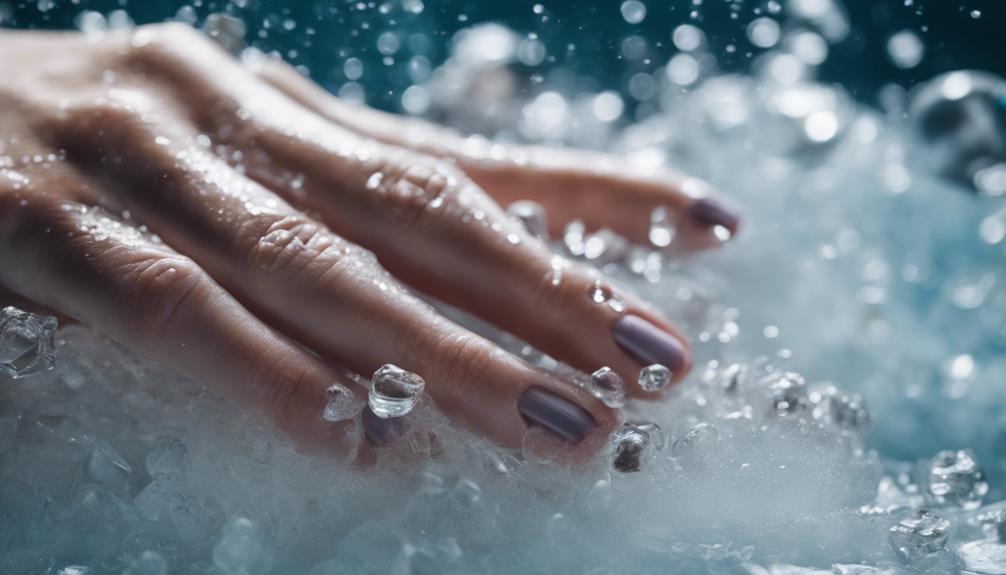
After carefully evaluating various nail drying techniques, experts unanimously agree on the most effective method for achieving quick and flawless results. The final verdict is in, and it's time to unveil the top choice for drying nail polish efficiently. Here are some key points to consider:
- Quick Dry Drops: These innovative drops are designed to accelerate the drying process of nail polish, leaving a smooth and glossy finish in no time.
- LED Nail Lamps: Utilizing LED technology, these lamps provide a quick curing process that dries nail polish effectively and efficiently.
- Spray-On Nail Polish Dryers: These convenient sprays form a protective layer over wet nail polish, speeding up the drying time and preventing smudges.
- Fan Dryers: With adjustable settings, these devices offer a gentle breeze to help set nail polish faster without compromising the final result.
- Top Coat Sealants: Applying a high-quality top coat not only adds shine but also helps seal in the color, ensuring a durable and quick-drying finish.
Frequently Asked Questions
Can Using Ice Water Speed up Nail Polish Drying?
Utilizing ice water to expedite nail polish drying is a technique worth exploring. The rapid cooling effect can potentially solidify the polish layers, aiding in a quicker setting process. Experimentation with this method may yield efficient results.
What Are the Risks of Using Ice Water for Drying Nails?
The risks of using ice water for drying nails include potential skin damage from prolonged exposure to cold temperatures, increased sensitivity to nail polish chemicals, and the possibility of smudging the polish if not completely dry.
Is the Ice Water Method Better Than Air Drying?
Utilizing ice water as a novel method for enhancing nail polish drying time is gaining traction. Its efficacy compared to traditional air drying remains a subject of interest, warranting further exploration to determine its superiority in expediting the nail lacquer setting process.
How Does Thermal Shock Affect Nail Polish Drying?
Thermal shock, a rapid change in temperature, can affect nail polish drying by potentially causing it to harden quicker. This sudden shift may help set the polish, offering a faster drying time compared to traditional methods.
Are There Any Tips for Using Ice Water for Drying Nails?
When using ice water to dry nails, ensure the polish is almost set before dipping them. The rapid temperature change can help speed up the drying process. Additionally, gently pat nails dry after removal to avoid smudging.

